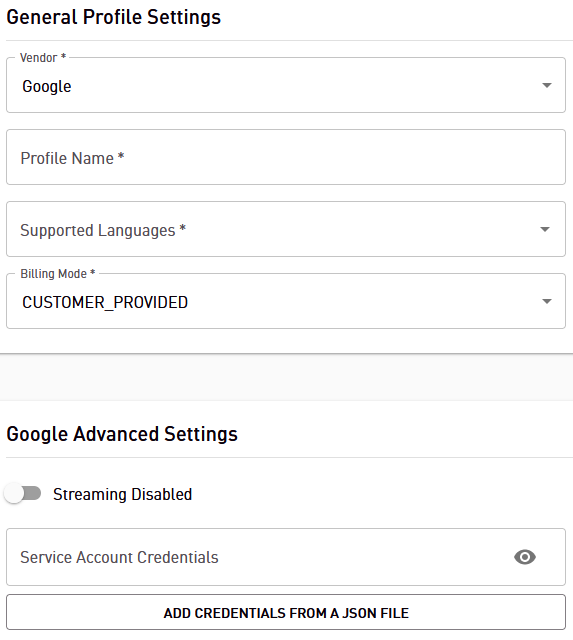CVG 1.13.0 (14-July-2021)
The new version of CVG allows your bots to forward calls to humans even better. In particular, forwarding chains are also possible if call destinations are busy or not reached. This enables bots built with CVG to be used in further application areas in the contact center environment. At the same time, scenarios are also possible in which the forwarding targets are not a classic contact center but somewhere “out there”, for example, self-employed persons or branch offices.
In addition, we now allow you to bring your own Speech-to-Text (STT) from Google as well.
Last but not least, we have tweaked the usability of our UX here and there.

Enhanced call forwarding / call bridging
Handling of non sucessful call forwarding / call bridging
In the typical use-case inside a call center environment a target number for /call/forward and /call/bridge is always answering the call. But this is definitely not true outside the contact center environment.
To keep the bot in control in case the forward/bridge fails we made the API calls blocking. Although this is a breaking change, we decided to do this in consultation with our customers. Only in this way can the bot receive information about the success/failure of a forward/bridge request.
In case of a successful forward / bridge the response includes OutboundCallSuccess with ringTime in milliseconds, the dialogId and a ringStartTimestamp measured in milliseconds since the epoch (1970-01-01).
In case of a failed forward / bridge the response includes OutboundCallFailure with ringTime in milliseconds, a ringStartTimestamp measured in milliseconds since the epoch (1970-01-01) and a reason, e.g. RING_TIMED_OUT. Check out the OutboundCallFailure schema in the API specification for all possible reasons.
In case of our Dialogflow and Cognigy integration outbound-failure and outbound-success are newly introduced events to enable a Dialogflow / Cognigy bot to handle forward / bridge failures, see Dialogflow Integration resp. Cognigy Integration.
Ringing Tone
For a call handover, a ringing tone can optionally be played into the caller line while the call is being set up. To enable this ringing tone the parameter experimental-enableRingingTone can be set to true at /call/forward and /call/bridge. A ringing tone built into CVG will be played.
It is also possible to activate a ringing tone from our integrated conversational AIs Cognigy and Dialogflow. For this purpose, the parameter experimental-enableRingingTone can also be set to true. In further integrated Conversational AIs this feature will be available soon.
Ringing tone is alpha
We will support ringing tone more extensively in the future. Among other things, it will also be possible to use your own ringing tones. We would like to get more input from you on this and will extend the API accordingly. Therefore, this parameter is currently to be considered experimental. In the future we reserve the right to change the API for ringing tones according to further requirements.
Bring your own Google Speech-to-Text
Since almost one year we enable our customers to use their own Microsoft account for Speech-to-Text.
Since we have received more and more requests to be able to use your own Google account for Google STT, we are now making this possible, too. Use the menu item “Speechcloud Profiles” to add your own Google STT by entering your Google credentials.

UI Improvements
Display Country and Location for Phone Numbers
To better show the geolocation of International Access Numbers (and platform numbers) the country and city (if available) of these numbers are made visible.

Project in Billing View links to Dialogs in Project View
It is now easier to get from a project in the Billing View to the dialogs underlying this Billing View. Just click on the project in the Billing View, then it opens the dialog view for this project for the set period.
Broswer Tab Title shows CVG Environment
If you have access to different CVG environments, it is easier to find the right browser tab because we added the environment in the tab title.
Faster Access to DialogId
The dialogId is often required during development. For faster access to it we have added a copy button next to the dialogId under Projects -> Dialogs.
Configurable Recordings for VIER Interaction Analytics
When using the integration with VIER Interaction Analytics, recordings are automatically transferred to Interaction Analytics. In the CVG console, you can now control what type of recordings are automatically transferred. You can either choose to upload all recordings or only recordings with a recordingID that starts with a specific prefix. You can name the recordingID when starting the recording via the API, see /call/recording/start. If the recording ID is omitted, “default” will be used.
